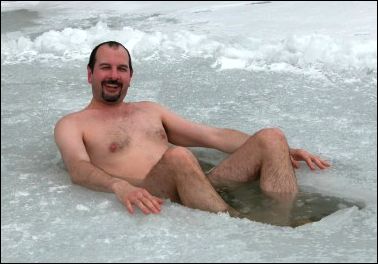Exercising in the heat? Cool down for better performance
Using cold water, ice baths or ice vests before or during a workout in the heat helps athletes perform better, according to a new review.
One way to think about it, said study author Dr. Thijs M H Eijsvogels, would be that cooling techniques may reduce the amount of energy the body needs to use to stay cool, leaving more energy for the exercise itself.
“More blood will be available for oxygen transportation to the exercising muscles, which enables a better performance,” he told Reuters Health by email. “Thus less energy and effort is spilled for heat dissipating mechanisms.”
Eijsvogels, of the physiology department at Radboud University Medical Center in The Netherlands, and his colleagues included 28 studies in their review of prior research on cooling techniques.
All the studies focused on methods used by male athletes when temperatures were above 86 degrees Fahrenheit, and 20 of those looked at “precooling” techniques used before the workout began.
Before exercise, the athletes used methods like wearing a cooling vest or cooling packs, immersing themselves in cold water, drinking cold water or an ice slurry, or a combination of these.
During exercise, the methods were the same with the exception of dunking in a cold pool.
 Overall, using cooling techniques before or during exercise improved performance and combining the two worked best, according to the results published in the British Journal of Sports Medicine.
Overall, using cooling techniques before or during exercise improved performance and combining the two worked best, according to the results published in the British Journal of Sports Medicine.
The most effective methods were the ice vest during exercise and a combination of all the techniques before exercise.
On average, athletes who used cooling techniques performed almost seven percent better than those who did not, which could mean the difference between winning and losing, Eijsvogels said.
“Remember that in many elite sports the difference between a first and fourth place is marginal, so improving your performance with 6.7 percent due to the application of appropriate cooling techniques can have a large impact on the race result,” he said.
Even average athletes would notice a difference, said Dr. Paul Laursen, physiology manager at High Performance Sport New Zealand in Auckland.
“If performance matters to you, then it’s worth the effort,” Laursen told Reuters Health by email. He was not involved in the review.
 The authors caution that most of the studies they analyzed were very small, including an average of nine people, and there may have been other studies finding less of an effect or no effect that were not published, which would skew their result.
The authors caution that most of the studies they analyzed were very small, including an average of nine people, and there may have been other studies finding less of an effect or no effect that were not published, which would skew their result.
Exercise increases core temperature, which can hurt performance. The review found that precooling decreased peak core body temperatures from 102.4 degrees Fahrenheit to 100.6 degrees.
“In general, the exercise-induced increase in core body temperature could lead to the development of heat-related illnesses, such as heat stroke,” Eijsvogels said. Cooling strategies may potentially do more than just improve performance, they may also reduce the risk of heat-related illnesses, he said.
Currently only some elite athletes use cooling techniques, mostly for sports like racing, cycling, motor cross racing, soccer and field hockey, he said. Ice vests are heavy to wear during a workout, and most casual exercisers don’t have access to ice slurry during a race, he said.
But he advocates wider use of the techniques beyond elite athletes, and novel developments in cooling fabric and gadgets might change this in the near future, he said.
“The take home message is that you want to know what you’re doing beforehand – test things out first that make sense based on the science, and once you’re confident that these will work for you, have a go in real competition,” Laursen said.
SOURCE: British Journal of Sports Medicine, online April 19, 2014